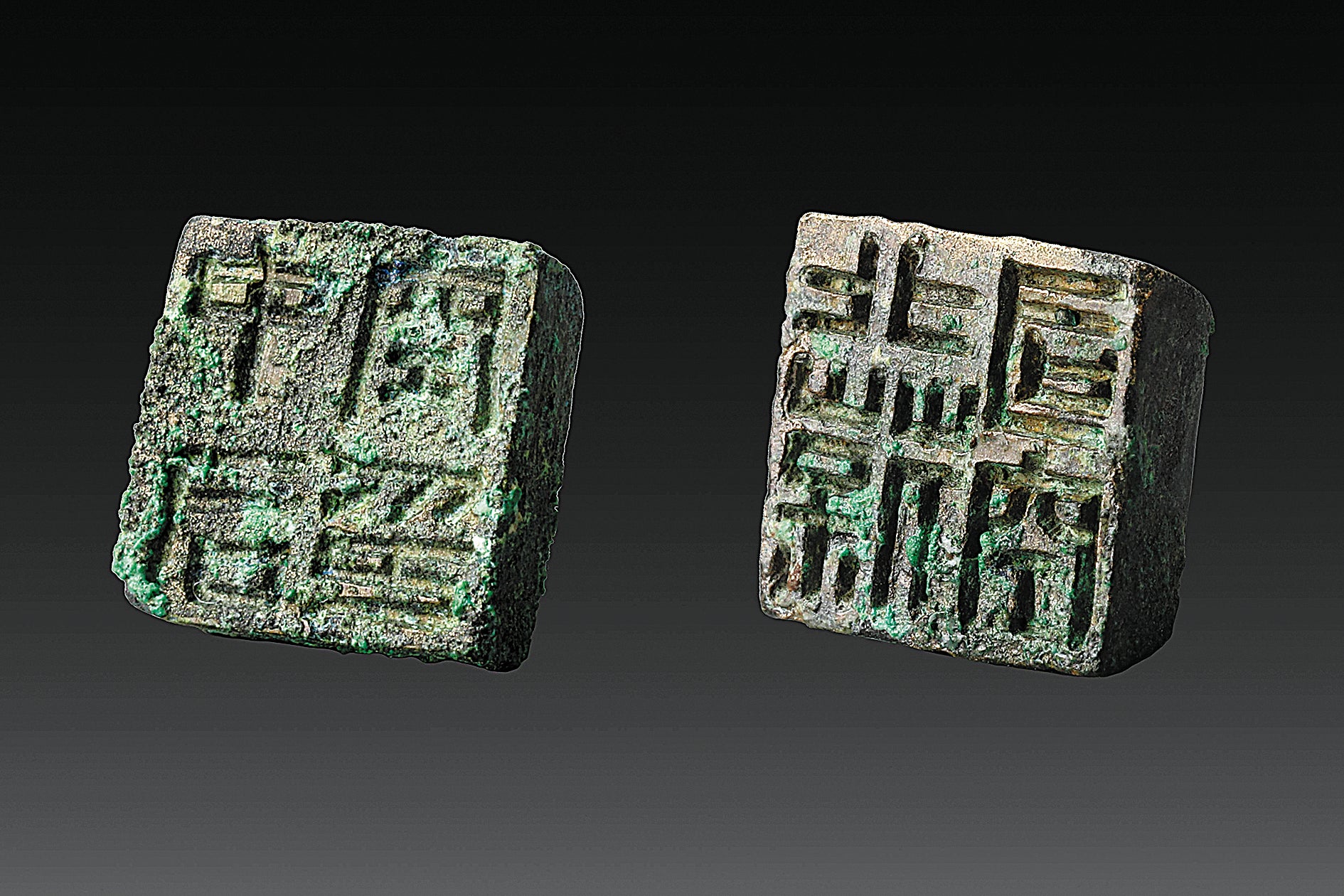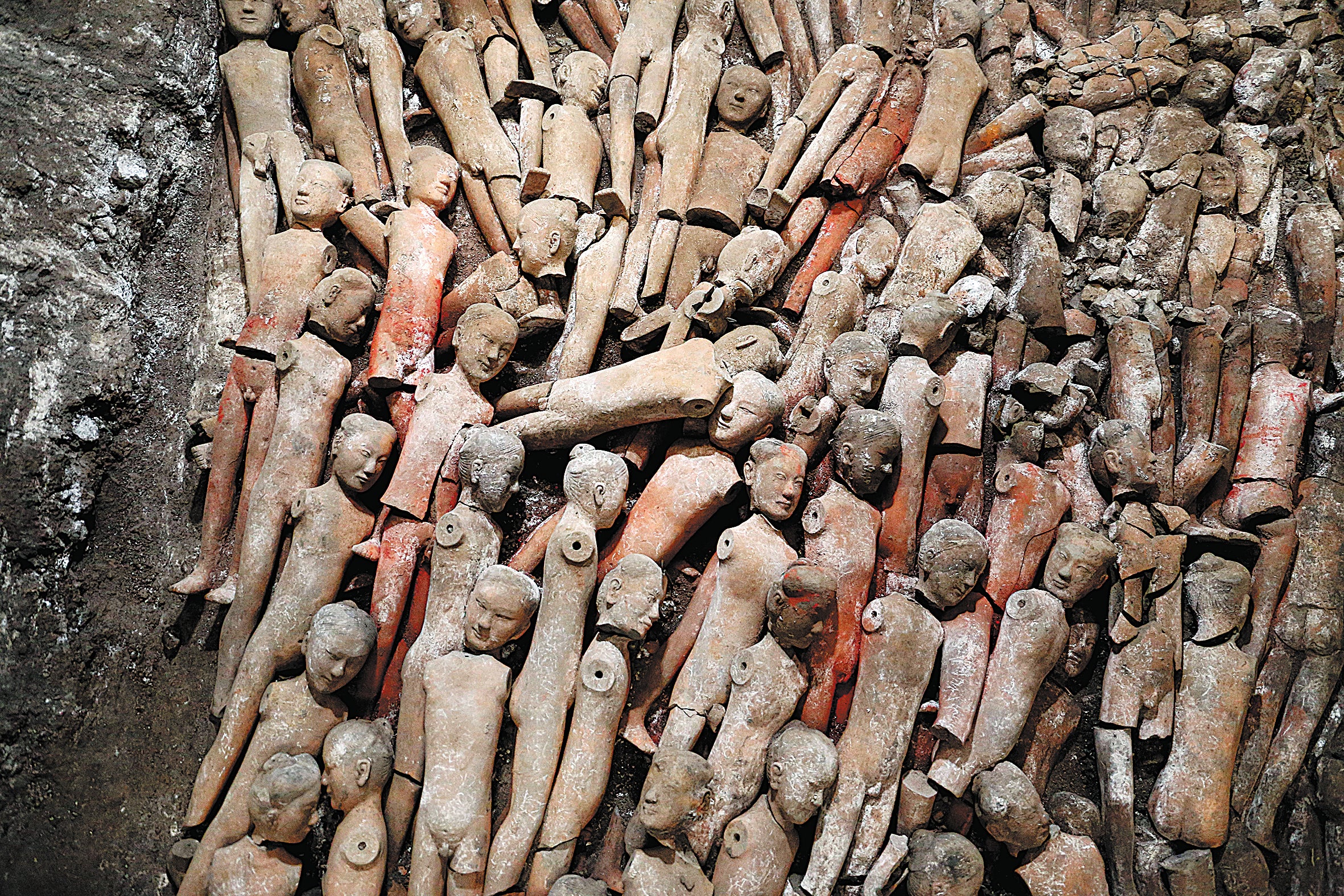Ancient tomb confirmed as that of famed Han emperor
THE ARTICLES ON THESE PAGES ARE PRODUCED BY CHINA DAILY, WHICH TAKES SOLE RESPONSIBILITY FOR THE CONTENTS

After years of study, a grand tomb more than 2,000 years old in Xi’an, the capital of Shaanxi province, was confirmed to be the mausoleum of a famous emperor of the Western Han Dynasty (206 BC-AD 24), the National Cultural Heritage Administration announced on December 14, 2021.
Liu Heng (203-157 BC), or Emperor Wen of Han, was the third emperor of the Western Han Dynasty. He was famed for diligence and thriftiness. The reigns of Emperor Wen and his son Emperor Jing were hailed by historians as the Rule of Wen and Jing, the first period of general stability and prosperity during China’s imperial years.
Ancient documents roughly indicated the location of Emperor Wen’s mausoleum, known in history as Baling, but its specific whereabouts had remained obscure.
The newly confirmed mausoleum site was found in 2006. In 2016, some areas surrounding the site were raided by tomb robbers, and a rescue excavation was later launched by archaeologists.
Based on excavations at the tomb site since 2017, the structure and burial objects that were unearthed have revealed the extraordinary identity of who is buried there, according to Ma Yongying, a researcher with the Shaanxi Academy of Archaeology.

“Its format and large scale fit the highest-level tomb of the Western Han Dynasty,” he said. “The idea is also supported by our investigations of the outer burial pits around the tomb.”
More than 110 burial pits were scattered around the tomb. According to Ma, though only eight have been excavated, more than 1,000 pottery figurines that “guarded” the emperor were found. Thousands more artefacts made of pottery, iron and bronze were also unearthed.
Some of the bronzeware pieces were decorations for horses and chariots, and a group of Western Han officials’ seals were also among highlights of the discoveries.
“It showed these pits may mimic an entire system of government,” Ma said. “The emperor wanted to rule his country even in the underworld.”
Researchers once faced challenges in looking for Baling, because no towering mound was erected to seal Liu Heng’s mausoleum due to the emperor’s preference for a simple lifestyle.
Archaeological investigation in the area began in the 1960s. Preliminary excavations were also made in the 1980s and around 2000.
Ma said that the discovery of the graves of Liu Heng’s empress and his mother further indicated that the grand tomb in the centre should be the emperor’s long resting place.
“It is the earliest Western Han royal graveyard in which the emperor’s tomb was put in the centre and was surrounded by burial pits,” he said.
The discovery of Baling also means that the whereabouts of all 11 Western Han emperors’ mausoleums in or near Xi’an, then the national capital known as Chang’an, have been confirmed, Ma said.
The tomb was a milestone in the evolution of Chinese royal mausoleums, said Liu Qingzhu, an archaeology researcher with the Chinese Academy of Social Sciences. The emphasis of previous rulers’ mausoleums was more on connections within their own families. For example, royal couples were often buried together.
“But Liu Heng’s tomb reflected that the country, represented by the emperor’s power, was the priority,” he said.
Previously published on Chinadaily.com.cn

Bookmark popover
Removed from bookmarks